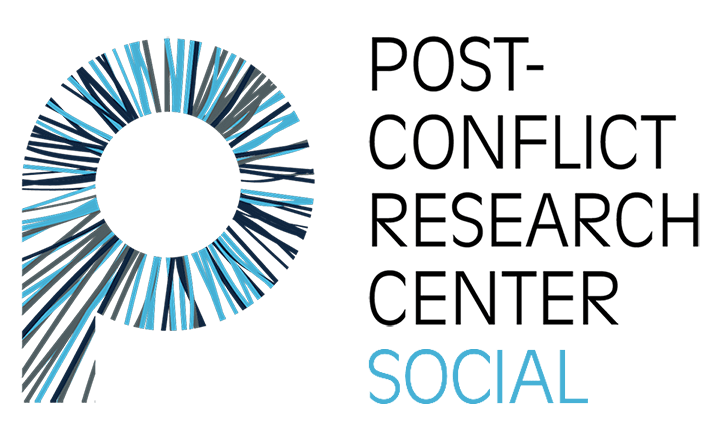
Bosnia and Herzegovina through the eyes and feelings of its people.
As part of the commemoration of thirty years since the signing of the Dayton Peace Agreement and thirty years of peace in Bosnia and Herzegovina, we invite you to the presentation and accompanying exhibition of the Subjective Atlas of Bosnia and Herzegovina, starting at 6 p.m. on Wednesday, December 3, 2025, in the City Hall, Brodac 1, Sarajevo.
The Subjective Atlas of Bosnia and Herzegovina was created through the partnership of the Post-Conflict Research Center (PCRC), the Subjective Editions organization from Brussels, and Newcastle University. The Sarajevo exhibition was organized in cooperation with the City of Sarajevo and the Sarajevo Information Centre on the International Criminal Tribunal for the former Yugoslavia (ICTY), with the support of the company Public Enterprise Sarajevo and the band Frtutma Kids.
Subjective Atlas presents the works of 88 youth authors from Bosnia and Herzegovina and the diaspora, who through drawings, collages or photographs show how they see, feel, remember or imagine their country. Their works were created or initiated at workshops held in Sarajevo, Srebrenica, and Vitez.
The Mayor of Sarajevo, Samir Avdić, emphasized the importance of providing space for young people to talk about their experiences and visions of the country through creativity and art.
“Today, the city hall once again becomes a symbol of meeting, dialogue and common reflection. We are proud that Sarajevo has the honor of hosting young authors whose works show the power of creativity and hope for the future of Bosnia and Herzegovina. Their drawings, maps, and photographs remind us that peace is not only the absence of conflict, but also a space that we must constantly build anew,” said Avdić.
Annelys De Vet, founder and one of the editors of the Subjective Atlas of Bosnia and Herzegovina, said that during two years of work in BiH, they collected over eighty personal maps of people living in a country that was long defined by foreigners, and which was reduced to entities, ethnic groups, and war narratives. “This Atlas counters such narratives with ambiguous cartography, visual stories that show how people live, remember and imagine this place,” said De Vet.
In a landscape where trauma and political inertia persist, according to De Vet, The Subjective Atlas of Bosnia and Herzegovina opens up space for critical imagination and invites us to see Bosnia and Herzegovina not as divided but as a layered place of intertwined histories and strong futures, mapped from within.
Geographer James Riding, who initiated the creation of The Subjective Atlas of Bosnia and Herzegovina, calls the images in the Atlas “maps“, saying that some are honest, intimate, local, accessible and often different, drawn with felt-tip pens, pastels, or wooden crayons on plain paper.
“These maps are intimate works of art about everyday life, created at participatory mapping workshops with young people while they were drawing, pasting pieces of paper, listening to music or eating burek or some other pie,” said Riding.
The collection of maps in Atlas, as he explained, shows the collapse of facades on buildings, football graffiti, a collage of the iconic Golf from one to three, which is still being repaired and patched, a diaspora shopping list, a recently cleared minefield, personal collections of crocheted handicrafts, woolen socks, juices, jams, burek, brandy, cigarettes and more.
Velma Šarić, founder and president of PCRC, said that creative approaches have the power to serve as tools on the way to building peace. “The imaginative contents in this Atlas were created with the aim of encouraging dialogue and influencing public opinion, and its promotion this December is of particular importance because it gives us the opportunity to face the legacy of 30 years of peace in BiH through the eyes of young people,” explained Šarić.
The Subjective Atlas of Bosnia and Herzegovina, as the name suggests, is a subjective story, but the editors hope to provide a unique picture of Bosnia and Herzegovina in which everyone who calls this country home will find a piece of themselves. As part of the presentation of the Atlas in the Sarajevo City Hall, visitors will be able to see an exhibition of works by young authors and enjoy the musical performances of the children’s band Frtutma Kids and the stage performance of their ballerinas.
For more information about the program on December 3, as well as to announce your participation, you can reach out via email: [email protected]





